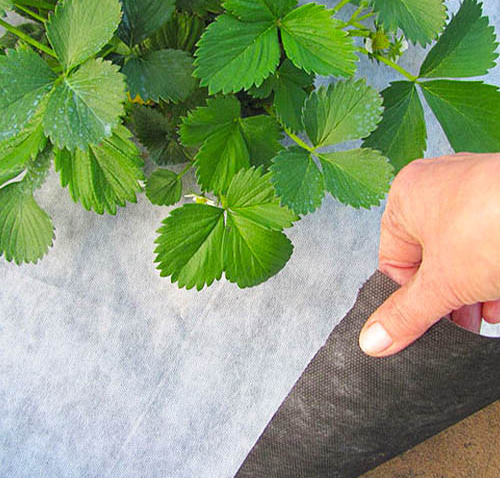
11 “secrets” of the use of agricultural fiber, which summer residents do not know
1
This is a real salvation for summer residents who cannot constantly open and close the greenhouse under the film, because spunbond allows air and moisture to pass through, which prevents the death of plants from overheating, and also allows raindrops to penetrate inside the shelter. However, you should know some subtleties of using this material.
Details
Spunbond (non-woven material, agricultural fiber) is a synthetic material of different densities. It can be white, black or black and white (black on one side, white on the other).
- The denser the material, the more it can save plants from severe frosts;
- If only a low-density product is at hand, it can be folded into two or three layers, thereby increasing its protective properties;
- Spunbond is an excellent protection against airborne pests and diseases. For example, many summer residents keep cabbage under agrofibre all summer, which eliminates the need to treat it with chemicals against pests. Cruciferous fleas and cabbage moth simply will not reach the plant;
- The heat under the shelter is not the material itself, but the air. The more it is, the longer the heat is retained after sunset. However, you should not build shelters that are too high, otherwise they will be carried away by the wind;
- Despite the capacity, some water rolls off the walls during rain, so you need to check the soil for drying and carry out additional watering. But the advantage of shelter is that it prevents intensive evaporation of moisture;
- Agricultural fiber with stabilizing additives will last (with careful handling) for many years, and without them it will begin to tear already in the second or third season. Yes, fiber with additives is more expensive, but it pays off at least by saving time, because you don't have to constantly change the material;
- In the period of severe frosts, it is better to use a film, because it better protects against frost. But this is if you can open the greenhouse in the morning and close it in the evening;
- To achieve even greater thermal insulation, you can first cover the bed with spunbond, and on top with a film. In this case, heat will be better preserved, but condensate will stop accumulating on the “ceiling”, as the fiber lets moisture through;
- White non-woven material can be used to shelter plants for the winter – wrap them around roses, grapes, tree trunks.
- Black or black and white material replaces the mulching dark film. Unlike the latter, it lets water through and allows the soil to breathe
- If there were no arcs at hand, you can cover the crops directly on the ground. Spunbond weighs little, the stairs will easily lift it;
Non-woven material is an indispensable assistant. Using it in early spring allows you to get fresh greens to the table a few weeks earlier, to smooth out the differences in day and night temperatures, which will have a favorable effect on the development of plants.
And on a hot summer afternoon, agrofiber will play the role of shading, protecting plantings from the scorching sun . It is also a good protection against birds, which often like to feast on ripe currants or strawberries.

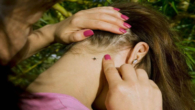
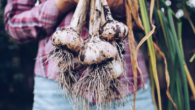
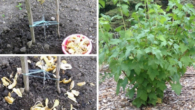
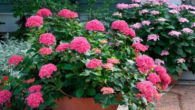
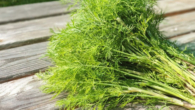



Leave a Reply